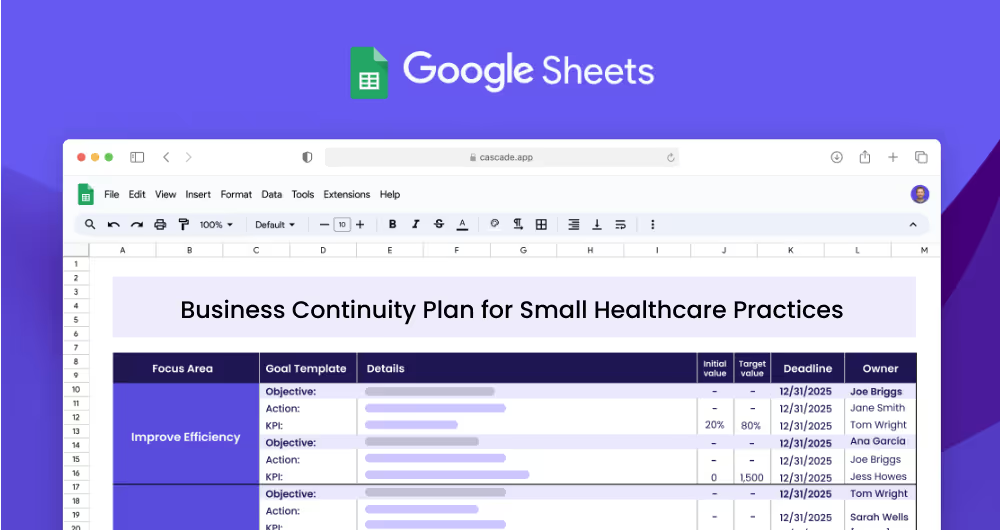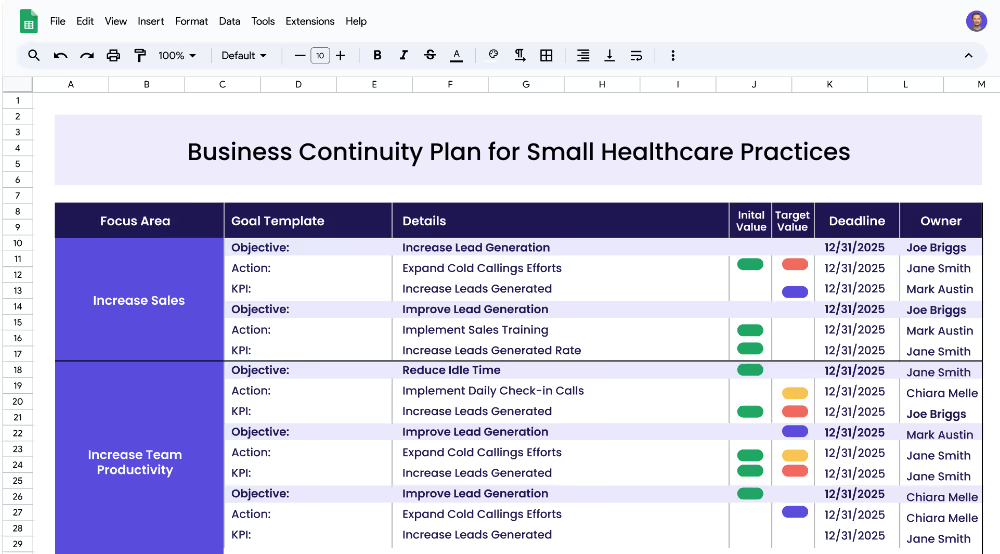A business continuity plan is a plan that outlines how a small healthcare practice, clinic, or outpatient facility will handle unexpected events or disruptions to its operations. It outlines the steps that need to be taken to ensure the continuity of patient care, appointments, and medical services. The plan also details the resources needed to carry out the steps, such as personnel, technology, and equipment. Additionally, it also outlines contingency plans in the event of a disruption or emergency.
Each focus area has its own objectives, projects, and KPIs to ensure that the strategy is comprehensive and effective.
The Business Continuity Plan for Small Healthcare Practices template is designed for small healthcare practices, clinics, and outpatient facilities to create their business continuity plans. The template provides the framework for organizations to identify and evaluate risks, develop a plan to respond to disruptions, and ensure the continuity of patient care, appointments, and medical services during emergencies or unexpected events.
Focus areas are the core areas of the business continuity plan. Examples of focus areas for a small healthcare practice, clinic, or outpatient facility may include continuity of patient care, continuity of appointments, and continuity of operations. Each focus area should have objectives, actions, and measurable targets (KPIs) associated with it.
Objectives are goals that need to be achieved in order to accomplish each focus area. Examples of objectives could include ensuring the availability of medical services, ensuring accessibility of patients, ensuring availability of appointment scheduling, and ensuring accessibility of resources.
KPIs are measurable targets that are used to track the progress of each objective. Examples of KPIs could include maintaining a business continuity plan, increasing remote patient visits, maintaining an appointment schedule, and increasing online appointments.
Projects are actions that need to be completed in order to achieve each KPI. Examples of projects could include developing and maintaining a business continuity plan, developing and implementing a remote care strategy, developing and maintaining an appointment schedule, and developing and implementing a resource allocation plan.
If you're ready to accelerate your strategy and see quicker, more efficient results, Cascade Strategy Execution Software is your essential next step. Unlike spreadsheets, which can become cumbersome and error-prone as strategies grow, Cascade provides enhanced visibility through visual dashboards and integrates strategy planning with execution seamlessly. This allows teams to collaborate effectively, adapt quickly to changes, and maintain alignment across all levels. Sign-up for free or book a demo with one of our strategy experts to elevate your strategy execution today!


